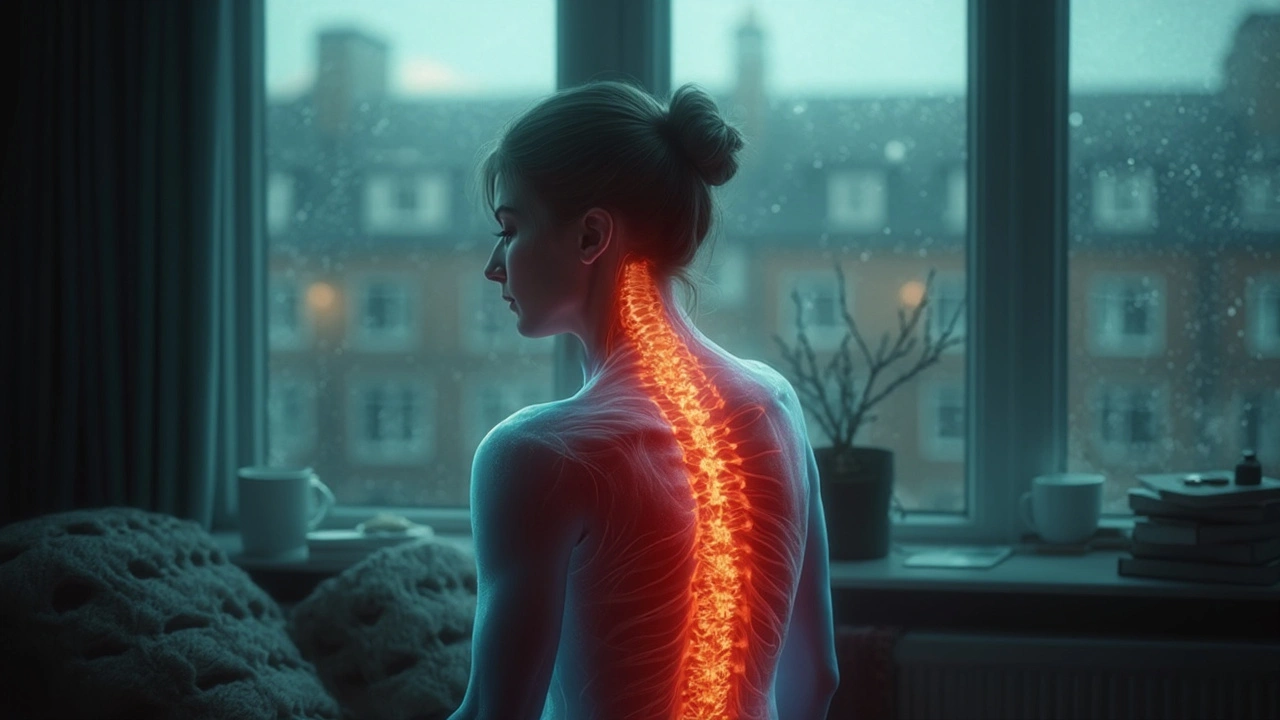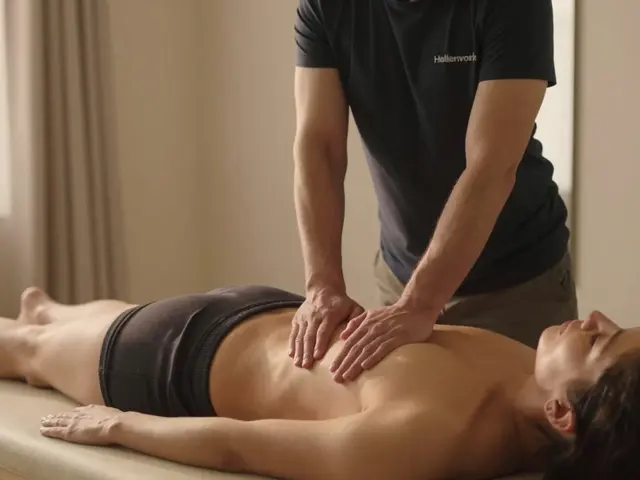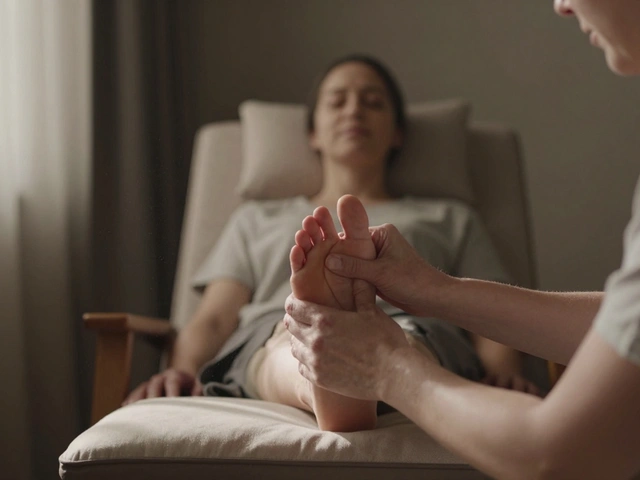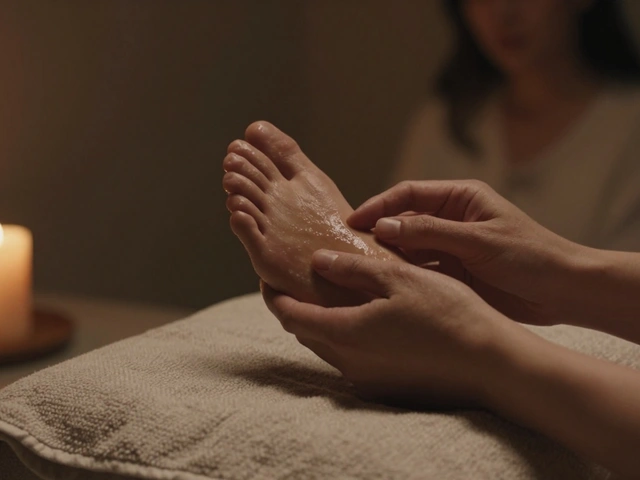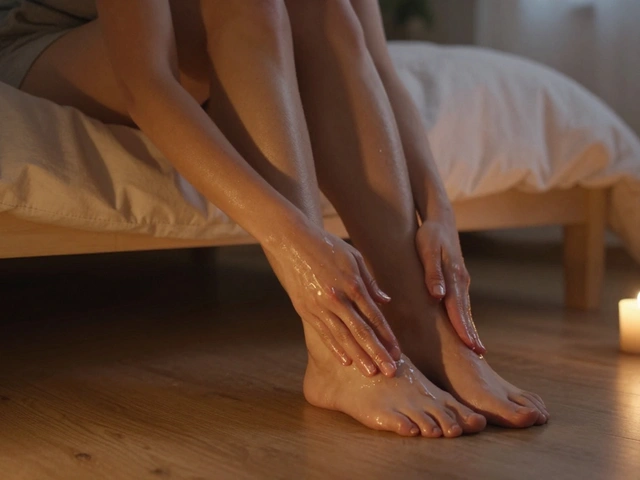Sharp, nagging pain from a tiny knot can hijack your whole day. The fix most people overlook? Done right, trigger point massage can ease the ache in minutes and keep it from bouncing back. It’s not magic, and it won’t cure every pain. But for muscle knots, tension headaches, desk neck, runner’s calf pain, and stubborn butt pain that mimics sciatica, this is a fast, low-risk way to feel human again.
Here’s the deal: you’ll learn what trigger points are, how to release them safely at home, which tools actually help, and how to keep results. I’ll point out red flags so you don’t push through something serious. I live in Perth and spend a lot of time working with real-world, sun-baked shoulders and weekend-warrior calves. You’ll get no fluff-just clear steps, grounded in what research supports and what consistently works in practice.
TL;DR
- Trigger points are tiny, overactive spots in muscle that can cause local and referred pain. They’re common and very treatable.
- Press-hold for 60-90 seconds (about a 6/10 “good hurt”), breathe, and repeat 2-3 rounds. Then move and lightly stretch.
- Target the right spots: neck/shoulders for headaches, glutes for butt/thigh pain, calves for heel pain, forearms for elbow pain.
- 2-3 short sessions a week beat marathon sessions. Expect relief within minutes to days; stubborn cases take 2-4 weeks.
- Stop if pain is sharp, electric, or you feel numbness/weakness. See a pro for persistent or unexplained pain.
What Trigger Points Are and Why They Hurt
Trigger points are tiny, hyper-irritable spots in muscle bands that feel like a pea or string under your fingers. Press them and you’ll often feel: 1) a local tender zing, 2) a familiar “that’s my pain!” referral farther away (like a temple headache when you press your shoulder), or 3) a little twitch. They’re different from general muscle tightness and different from nerve pain.
What’s going on inside the muscle? In simple terms: local energy crisis and overexcited end-plates. The muscle fibers at that spot stay partially contracted, starving the area of oxygen, which makes the nerves more irritable. Over time, you get a feedback loop of pain, guarding, and more trigger points. Classic work by Janet Travell and David Simons mapped these patterns in detail (Myofascial Pain and Dysfunction). More recent reviews back the idea that treating these points can reduce pain and improve function, especially short-term, when combined with movement (Cochrane Review, 2023; Journal of Orthopaedic & Sports Physical Therapy neck and low back guidelines, 2021-2022).
What they feel like in real life: a deep ache you can’t quite stretch away; a pain that seems to move; tightness that spikes when you sit too long, type too much, or smash a new workout. They’re common in the neck/shoulders, upper back, glutes, calves, and forearms. They love stress, poor sleep, dehydration, long drives, and sudden spikes in training volume.
When this helps: mechanical pain clearly linked to muscle use or posture; tenderness you can reproduce with your fingers; pain that eases with pressure or heat; stiffness that improves after moving. When it doesn’t: true nerve root compression (numbness/weakness), acute injuries (tears, fractures), infection, inflammatory arthropathy, or red-flag symptoms (night pain that won’t settle, unexplained weight loss, fever). If you’re unsure, play it safe and check with your GP or a physio.
Expectation reset: most people feel noticeable relief in 1-3 sessions. The worst knots need 2-4 weeks of smart, regular work. It’s a piece of the puzzle, not the whole picture-pair it with light strength work, movement breaks, and decent sleep.
Quick Relief: Step-by-Step Trigger Point Massage
Here’s a clear, repeatable method that works across body areas.
- Warm up the area (2-3 minutes): a hot shower, heat pack, or 20 arm swings/air squats/marches. Warm muscle responds faster and hurts less.
- Find the point: scan with slow, curious fingers or a ball. You’re looking for a firm, tender spot that recreates your familiar pain or refers along a known line (e.g., temple, shoulder blade, down the thigh).
- Set the pressure: aim for a 6/10 “good hurt.” It should make you wince a little but let you breathe and relax. If you brace or hold your breath, it’s too much.
- Pin and hold for 60-90 seconds. Slow, steady pressure works better than aggressive digging. Use a ball against a wall for control. If it eases before 60 seconds, maintain for 10 more breaths.
- Add gentle motion (optional): while holding pressure, move the nearest joint through a small, painless range-turn your head for neck points, bend/straighten the knee for quad points, flex/point the ankle for calf points. This “pin-and-move” helps the muscle reset.
- Release and flush: ease off, then do 10-20 seconds of light rubbing or skin rolling around the area to promote blood flow.
- Recheck movement: turn your head, reach up, squat-confirm it helped. Repeat up to 2-3 rounds if relief plateaus or returns quickly.
- Finish with gentle lengthening: 20-30 seconds of easy stretch in the new, less painful range. No forcing.
Dose and timing:
- 2-3 short sessions per week per area; 3-6 minutes total per region per session.
- Leave 24-48 hours between heavy sessions on the same spot. Soreness next day is normal; bruising means you overdid it.
- Best windows: after a warm shower, post-walk, or in the evening when you can relax.
The 5 big mistakes to avoid:
- Going too hard, too long. Aggression triggers guarding. Stay at 6/10 and you’ll get more change with less fallout.
- Chasing pain in the wrong area. Knee pain often comes from quads or hips; heel pain from calves. Treat the usual suspects first.
- Skipping movement. Pressure opens the door; movement walks you through it. Finish with easy reps.
- Doing it once and calling it done. Muscles learn by repetition. Small, regular sessions stick.
- Ignoring red flags. Sharp, shooting, electric pain; numbness; weakness; unexplained swelling-stop and get assessed.
Simple pressure guideline by area:
- Neck/forearm: feather-medium pressure with thumb or soft ball.
- Shoulder/glutes/calves: medium-firm with ball/cane. Use a wall, not the floor, if you tend to overdo it.
- Quads/hamstrings: firm but broad-use a foam roller edge or your fist, not a sharp tool.
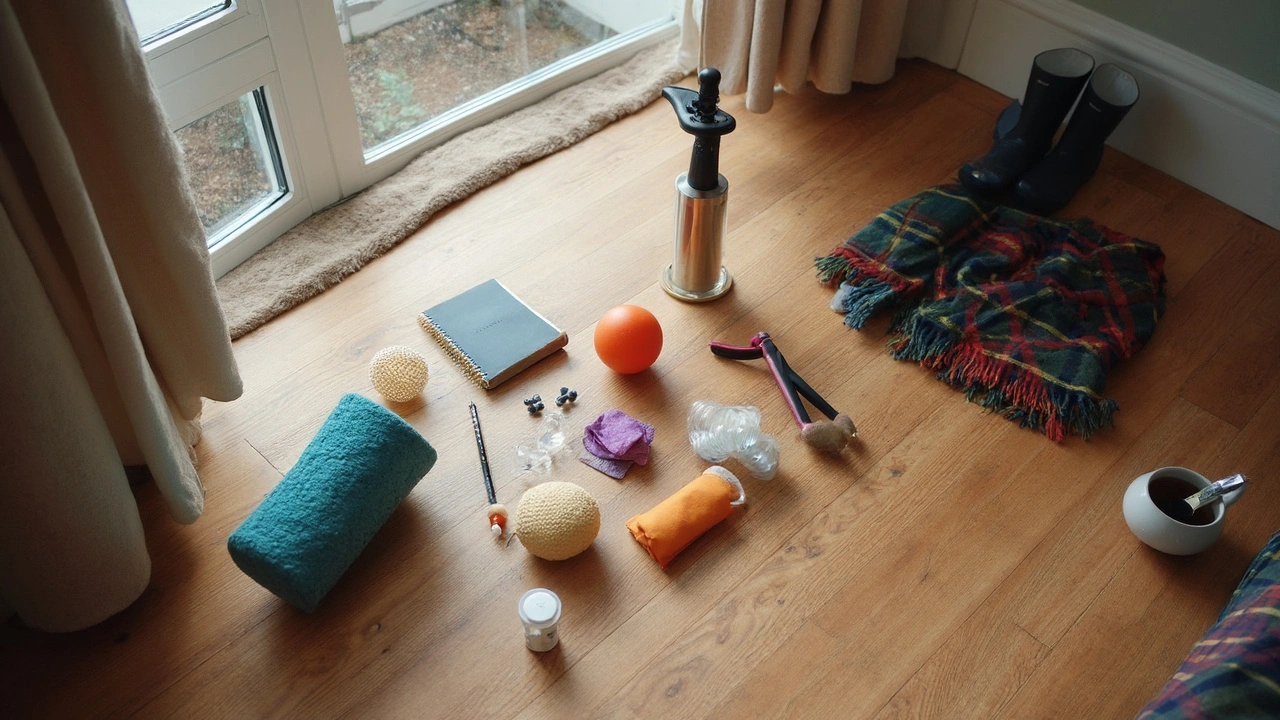
Map and Examples: Common Pain Patterns You Can Fix Today
Use these examples as a starting map. If a pattern nails your pain, you’ve likely found the driver. If not, shift one muscle upstream or downstream.
Tension headache / desk neck
- Likely culprits: upper trapezius (top of shoulder), suboccipitals (base of skull), levator scapulae (inside top corner of shoulder blade).
- Find it: pinch the ridge on top of your shoulder for a tender streak; press just under the skull with two fingers for a sharp referral to the eyes or temple.
- Treat it: ball against a wall on the upper trap; hold 60-90s; add head turns. For suboccipitals, lay on two tennis balls in a sock under the base of the skull; nod yes/no slowly.
- Finish: 10 slow chin tucks and 10 shoulder blade squeezes. Two minutes, twice daily for a week.
Butt pain that mimics sciatica
- Likely culprits: gluteus medius/minimus (side of hip), piriformis (deep butt), hamstrings (high attachment).
- Find it: stand at a wall; ball on the outer butt/side hip; roll until you hit a tender spot that sends pain down the side or back of the thigh.
- Treat it: hold 60-90s; add tiny hip shifts. If you feel pins-and-needles or true nerve signs, stop and get checked.
- Finish: 10 glute squeezes and 10 step-backs to re-activate the hip.
Runner’s calf / heel pain
- Likely culprits: gastrocnemius (upper calf), soleus (lower/deeper calf), flexor hallucis longus (inside calf for big-toe push-off).
- Find it: slide a ball up and down the calf against a wall; look for a ropey band that recreates heel pain.
- Treat it: press-hold 60-90s; pump the ankle slowly during the hold.
- Finish: 10-15 calf raises with a slow lower to build resilience.
Mouse hand / tennis elbow
- Likely culprits: wrist extensors (top of forearm), supinator (outer elbow), finger extensors.
- Find it: thumb-press along the top of the forearm until you hit a cable-like strip; pain often shoots to the outer elbow.
- Treat it: thumb or soft ball pressure; extend and flex the wrist while holding pressure.
- Finish: 10 eccentric wrist extensions with a light dumbbell or water bottle.
Kneecap pain on stairs
- Likely culprits: vastus lateralis (outer quad), rectus femoris (front quad), TFL/ITB region.
- Find it: side-lying, place a ball on the outer quad midway down; look for a hot stripe that echoes to the kneecap.
- Treat it: sustained pressure, then bend/straighten the knee slowly.
- Finish: 10 terminal knee extensions or mini-squats, focusing on even knee tracking.
How often? For each pattern, run 2-3 spots, 60-90s each, two to three days per week. If the pain keeps drifting back, expand your map one muscle up or down the chain.
Cheat Sheets, Tools, and Safety
Quick checks before you start:
- Can you reproduce your familiar pain with finger pressure on a specific spot? Good sign it’s myofascial.
- Does pressure feel like a “good hurt” that eases within 60-90s? You’re in the helpful zone.
- Do you feel sharp, electric pain, numbness, or weakness? Don’t massage-get assessed.
10-minute routine for busy days:
- Hot shower or 2-minute brisk walk.
- Pick two problem areas (e.g., upper traps and calves).
- Find 1-2 points per area; 60-90s each; add gentle joint motion.
- Do 10 easy activation reps (chin tucks, glute squeezes, calf raises).
- Drink water, take 10 deep breaths, then get on with your day.
Tools that actually help (no gimmicks needed):
| Tool | Cost (AUD) | Best For | Pressure Level | Pros | Cautions |
|---|---|---|---|---|---|
| Tennis Ball | $2-$6 | Neck, forearm, between shoulder blades | Light-Medium | Gentle, forgiving, great for beginners | May feel too soft for big muscles |
| Lacrosse Ball | $8-$15 | Glutes, calves, outer hip | Medium-Firm | Precise, portable, reliable grip | Can be too intense on bony areas |
| Massage Cane (Hook) | $30-$60 | Upper traps, mid-back, under shoulder blade | Adjustable | Self-press without awkward positions | Don’t crank-stay at 6/10 |
| Foam Roller (Firm) | $25-$60 | Quads, hamstrings, lats | Broad Pressure | Covers large areas fast | Less precise for tiny points |
| Heat Pack | $15-$40 | Pre-warm tight zones | N/A | Reduces guarding | Check skin; don’t burn |
Heat or cold?
- Use heat to relax guarding and make pressure work easier (great for neck/shoulders and calves).
- Use cold only if an area feels inflamed after you overdid it. Most trigger points prefer warmth.
Safety rules of thumb:
- Stay away from the front of the neck, groin, and direct pressure on nerves (funny bone) or major arteries.
- Bruising means you pushed too hard. Ease up next time.
- If you take blood thinners, have osteoporosis, diabetes with neuropathy, or are pregnant, get tailored advice from a clinician before self-treatment.
How this stacks up against other options:
- Dry needling: often effective short-term for myofascial pain (Cochrane Review, 2023). Many prefer it for deep points, but needles aren’t a must. Massage works; choose based on preference and availability.
- General massage: great for relaxation and circulation; less targeted. Combine both if you love the combo.
- Pain meds: short-term help for flares; they don’t fix the driver and can mask overuse.
- Strength/mobility: essential to lock in gains. Pressure opens range; strength keeps it.
Quick decision guide:
- If the pain is clearly recreatable with muscle pressure → use targeted massage, then light activation.
- If pain is vague, broad, and worse at night → try heat and gentle movement first; book an assessment.
- If pain shoots past the knee with numbness/weakness → skip massage; see a clinician.
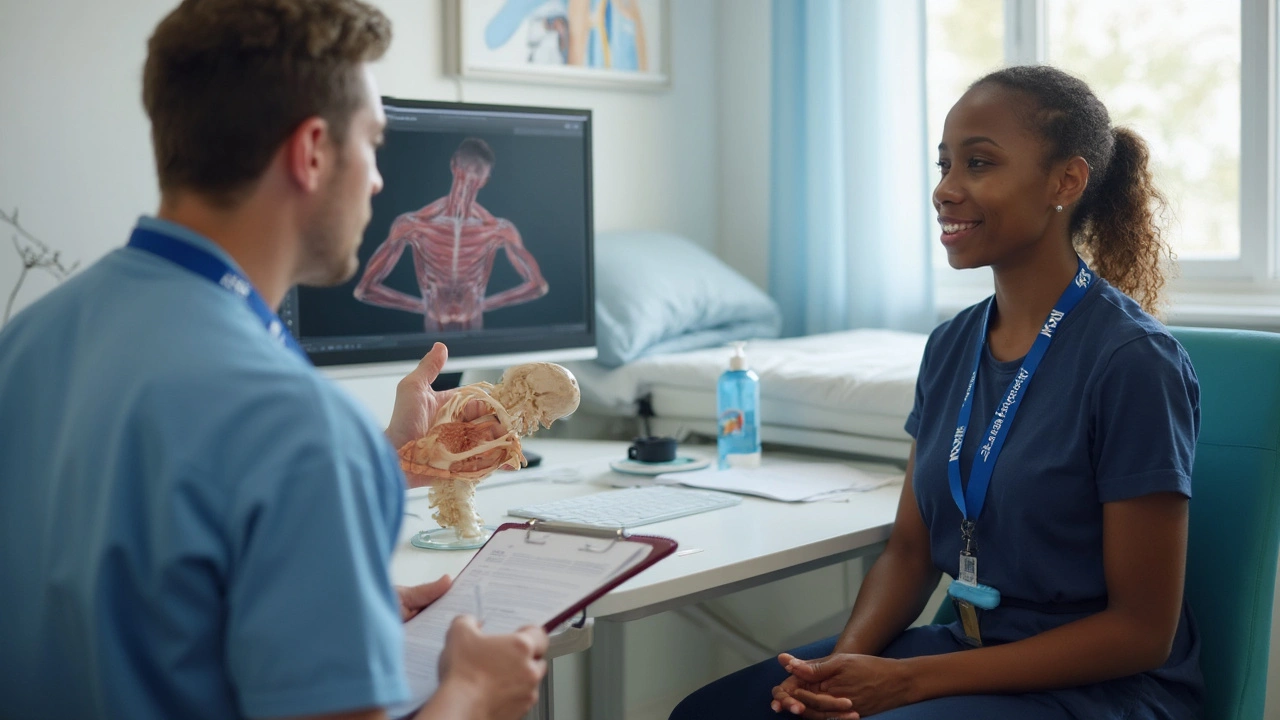
FAQ and Next Steps
Mini-FAQ
- Is there solid evidence? For myofascial pain, targeted manual therapy and dry needling show short-term pain reduction and function gains, especially when paired with exercise (Cochrane Review, 2023; JOSPT guidelines, 2021-2022). Long-term results depend on habits-movement, load management, and sleep.
- How hard should I press? A 6/10 “good hurt.” If you can’t breathe or relax your jaw, it’s too much. You should feel relief, not resentment.
- How long until I feel better? Many feel change immediately or within 24 hours. Stubborn spots often need 2-4 weeks of short, regular sessions plus light strengthening.
- Can I break up knots forever? Think “calm and retrain” rather than “break.” You’re normalizing tone and restoring movement. The knot shrinks as the nervous system chills out and the area gets stronger.
- Should I hydrate or take magnesium? Hydration helps cramps and recovery, especially in hot climates. Magnesium can help some people with cramps and sleep, but it won’t replace good load management. Check meds and talk to your GP if you’re unsure.
- Can I do this during pregnancy? Yes, with caution. Avoid deep pressure on the low back/abdomen, and get guidance from a prenatal physio or massage therapist.
- What if I’m sore the next day? Mild, bruise-like soreness is fine. Use heat, gentle movement, and reduce pressure next time. True bruising means you went too hard.
Two-week plan to lock in results:
- Week 1: Pick 1-2 problem regions. Treat 2-3 times (6-9 minutes per region per session). Finish each session with 1-2 simple strength moves (e.g., rows for shoulders, glute bridges for hips, calf raises for calves).
- Week 2: Keep the same frequency, but add 5-10% more activation reps and a daily 2-minute mobility snack (chin tucks, thoracic rotations, ankle pumps).
Desk worker quick fixes (Perth office heat makes slouching worse, I know):
- Upper trap point release with a ball + 10 band pull-aparts, twice a day during busy weeks.
- Timer every 45-60 minutes: stand, shrug-roll shoulders, 10 calf pumps.
Runner / gym-goer:
- Pre-run: 60 seconds per calf with the ball + 10 calf raises.
- Post-run: quads and glutes, 60-90 seconds each; then 10 bodyweight squats.
- Increase weekly volume by 10% or less; spikes create knots.
Parents/tradies with heavy lifting:
- Even out your load-switch arms; use legs to lift.
- End of day: 3 minutes on glutes/upper back + 10 hip hinges and wall slides.
When to see a pro:
- Pain that doesn’t improve after 2-4 weeks of consistent self-care.
- Recurring pain in the same pattern despite strength work-may need technique or load tweaks.
- Red flags: night pain that won’t settle, unexplained weight loss, fever, sudden severe pain, numbness/weakness.
What a good session with a physio or remedial therapist looks like:
- Clear assessment of drivers (posture, load, technique, stress, sleep).
- Targeted manual therapy if indicated (pressure, needling, or both).
- Homework: 1-2 exercises you’ll actually do, plus how often to repeat self-release.
Why this approach sticks: You’re retraining your nervous system and improving blood flow in a specific, repeatable way. The combination-pressure, breath, gentle motion, and strength-breaks the pain-guarding loop. That’s the sweet spot supported by both clinical research and what I see day to day.
Quick reference checklist
- Find it: tender spot that matches your pain.
- Press it: 60-90s at 6/10, breathe.
- Move it: tiny joint motion while holding pressure.
- Flush it: light rub, then easy stretch.
- Fix it: 10 activation reps to own the new range.
- Repeat: 2-3 sessions/week, reassess each time.
Sources worth knowing: Travell & Simons’ Myofascial Pain and Dysfunction; Cochrane Review (2023) on dry needling and manual therapy for myofascial trigger points; Journal of Orthopaedic & Sports Physical Therapy Clinical Practice Guidelines (2021-2022) for neck and low back pain; The Lancet low back pain series (updated commentaries through 2023) on non-pharmacological care. These support a blended approach: targeted manual work plus movement and education. That’s exactly what you’re doing here.

